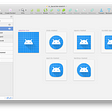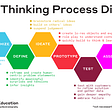Why a Screen?
We’ve gotten a lot of questions about the E-Ink display and front glass of the Light Phone II. I figured some of our backers would be interested in a little backstory of our design decisions to date, as well as a better illustration of our current challenges in finalizing the front face of the Light Phone II.
The original Light Phone (starting in 2014)
The original Light Phone was a unique and screen-less phone. When the phone was off it was perfectly blank, there were no signs of the interface below. It was our little magic trick, and it felt conceptually appropriate for the Light Phone, a phone designed to be used as little as possible.
We achieved that by using a custom fixed light-up keypad. The keypad would shine through a fully painted sheet of glass and become (mostly) visible through the front face of the phone when on and invisibly hidden when off. It was more challenging that makes it seem, but that’s how we pulled it off.
There were of course some pretty serious trade-offs, to name a few...
- The keypad was fixed to the numbers, triangle and X. Things like changing time preferences were not intuitive with such a fixed keypad.
- In shining through the paint, the interface became fuzzy and less legible.
- In daylight while competing against the sun, it was impossible to view.
- The keypad drained battery quite fast for our simple functionality
Although not great trade-offs in terms of utility, for the original Light Phone they were acceptable and actually almost aligned with the phone’s function (or lack thereof). It was a beautiful object that represented a powerful experience of ‘going light’, but it did fall flat as a reliable, everyday tool.
Idea for the Light Phone II
There were a lot of reasons we ultimately decided we’d make a second phone, many of which we’ve discussed before, so I’ll skip talking about the reasons we expanded functionality or how it’s a different phone, not necessarily a replacement of the original Light Phone.
Inevitably in making a Light Phone that could text, we had to make some design changes. We needed a visible screen that could display a variety of information and interfaces (i.e searching contacts, reading message threads, having a QWERTY keyboard). How could we add a screen and stay as close as possible to original form factor we loved and had, well, no screen?
Choosing a Screen
Understanding how small our phone was we knew it had to have a high resolution. The options seemed to be an OLED/LCD that you’d find on smartphones or an E-Ink screen like on a Kindle.
Purely on aesthetics, the LCD/OLED screens would never feel “seamless”. When ON they would be illuminating light, and when OFF it would just be a big black rectangle. E-ink however could keep the same background color whether the phone was ON or OFF. (In darkness the E-ink will illuminate too, but traditional screens are always illuminated when ON). E-ink had some other interesting advantages & trade-offs.
Ultimately, even the trade-offs felt appropriate. Inherently limiting the phone’s functionality with the screen’s limitations (Instagram would never work well on the Light Phone II ever). The screen refreshing, which is kind of weird, at least made the phone feel so much different than the glossy smartphones. As designers we find much pleasure in the honesty of materials being used, like the beauty in the imperfections of print, and it didn’t bother us that there was subtle ghosting at times too. To be able to view the screen effortlessly outside (where we were encouraging people to go light) just felt so right to us. Especially considering the first Light Phone (or any smartphone for that matter) was pretty much impossible to view in direct sunlight.
The Challenges of a Screen
The challenge of any screen is that you can’t paint the entire top glass as we did with our first Light Phone because you wouldn’t be able to see anything below. There is a window left un-painted so you can see the screen below, in our case the E-ink display (just want to be super clear, this window isn’t something tactile, but simply an area of the same flat piece of top glass with no paint).The task is to match the paint of the glass and the display below as closely as possible. This is often referred to as color matching, however there are really three factors at play. (colors used arbitrarily for distinction)
Color:
Color is the most straight forward seemingly. The color of the paint of the glass needs to match that of the screen exactly. There are lots of tools that help with this, and it can be more than just “color”, sometimes other additives are added to the paint too.
One difficulty we have to keep in mind with E-ink is that although it can keep it’s image forever without using any battery, the background color does fade (E-ink uses the term “degrades”) slightly when not used for many hours or days. Although quite subtle, it will become noticeable when the phone is sitting inactive for days. (The technical reason that happens is because E-ink uses electric charges to bring white or black to the surface of the paper. Over time when not used that charge begins to drift slightly resulting in subtle color degradation.)
Shadow:
Firstly, let’s understand that the top piece of glass is composed of a few layers which we can call a stack.
That entire stack is assembled as one unit and then pressed on top of our phone internals and back casing of the phone. The stack starts with our custom E-Ink module.
We get the module already assembled directly from E-ink. It’s composed of the TFT, E-Paper & a thin PS Sheet and comes to us as a finished unit. As you can see outside the screen area there are lots of exposed electronics that will need to be hidden under the paint layer.
From the bottom, the stack is made up of the E-ink Module, the Light Panel, the Touch Sensor and the final front glass on top. The Light Panel uses a small LED light and bounces light off of a piece of glass to illuminate the E-ink Module from above. The Touch sensor also looks like thin a piece of glass, but with some cables attached that will also need to be hidden. Finally the front glass, which is thicker for protecting the phone, and painted on the under side (leaving a window for the screen below but covering all the electronics of the layers below).
The distance between the underside of the Front Glass (paint layer) and the top of the E-ink Module creates a shadow when viewing from certain angles. While many call this a “seam”, there is no tactile “seam” at all, it’s completely flush to the touch (the top glass is represented by dotted line in diagram), it’s just that in viewing from certain angles the shadow becomes visible (exaggerated here for reference).
We‘ll continue to minimize the distance between the screen and paint, which I should mention is fractions of a millimeter. There are a few of the other ideas we’re experimenting with as well that seem promising. Of the three factors, the shadow is the most difficult (perhaps impossible) to completely eliminate. I should also mention that the shadow is more noticeable on the light gray phone than the black phone logically.
Reflection:
Even if there were absolutely no shadow and the colors were perfectly matched, you would still notice a difference of where the paint and screen met because of the texture of their surface and the way that it reflects light slightly differently. Naturally the glass is smooth on both sides, where as the surface of the E-ink Paper is matte and rough (on a granular level, not even to the touch really). We’ve been experimenting with a process called etching to chemically etch the the top and/or bottom glass so that it will better resemble the matte E-ink paper. It’s an expensive process and we’re going through the scientific process of each variables of the etching process to get a perfect match. We used the same process in the original Light Phone as well simply because the reflection becomes so beautiful and it feels great to the touch. In addition we’re also exploring layering other films within the stack.
Interface Design:
It’s not an aspect of the hardware challenge per say, but important to note here as well I think. Our OS on the phone is designed to help make the screen feel “screen-less”. The interface will always have a consistent background color and the elements will never get cut off by the edge of the screen which will help minimize how noticeable the screen border is. This is unique to the Light Phone II and I think really sets it apart from other phones.
Last Thoughts
While there are so many things that we are experimenting with still, there are the inevitable realities of the technology that exists. We’re confident it’ll be a beautiful phone with the best example of an E-ink screen relative to anything else that exists. It is not a “screen-less” phone like the original Light Phone and that took some internal reconciliation, but we really think that we are making a truly usable phone that one can count on day in and day out and that still embodies everything we set out to achieve when we launched Light.







